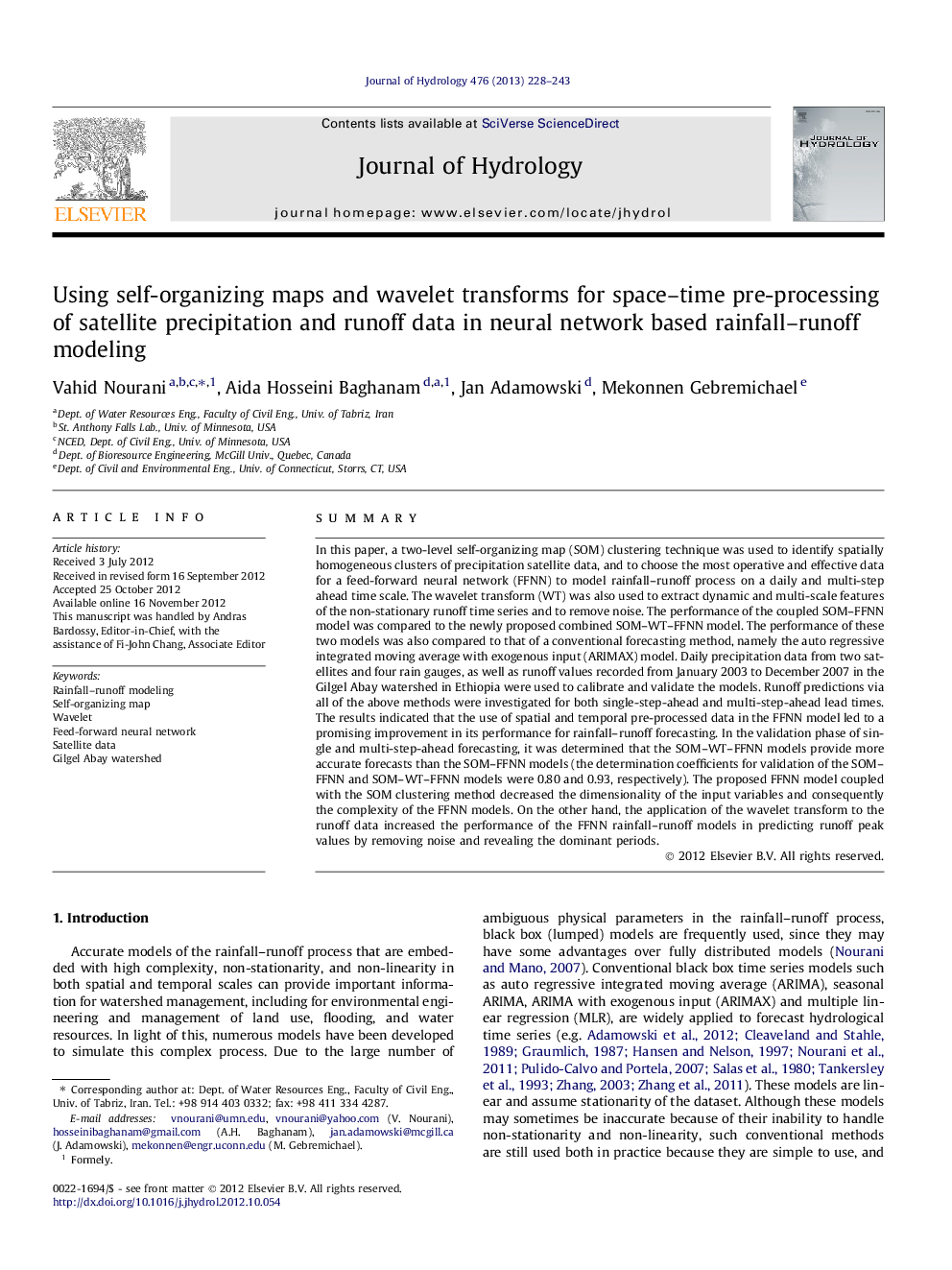| کد مقاله | کد نشریه | سال انتشار | مقاله انگلیسی | نسخه تمام متن |
|---|---|---|---|---|
| 4576613 | 1629972 | 2013 | 16 صفحه PDF | دانلود رایگان |

SummaryIn this paper, a two-level self-organizing map (SOM) clustering technique was used to identify spatially homogeneous clusters of precipitation satellite data, and to choose the most operative and effective data for a feed-forward neural network (FFNN) to model rainfall–runoff process on a daily and multi-step ahead time scale. The wavelet transform (WT) was also used to extract dynamic and multi-scale features of the non-stationary runoff time series and to remove noise. The performance of the coupled SOM–FFNN model was compared to the newly proposed combined SOM–WT–FFNN model. The performance of these two models was also compared to that of a conventional forecasting method, namely the auto regressive integrated moving average with exogenous input (ARIMAX) model. Daily precipitation data from two satellites and four rain gauges, as well as runoff values recorded from January 2003 to December 2007 in the Gilgel Abay watershed in Ethiopia were used to calibrate and validate the models. Runoff predictions via all of the above methods were investigated for both single-step-ahead and multi-step-ahead lead times. The results indicated that the use of spatial and temporal pre-processed data in the FFNN model led to a promising improvement in its performance for rainfall–runoff forecasting. In the validation phase of single and multi-step-ahead forecasting, it was determined that the SOM–WT–FFNN models provide more accurate forecasts than the SOM–FFNN models (the determination coefficients for validation of the SOM–FFNN and SOM–WT–FFNN models were 0.80 and 0.93, respectively). The proposed FFNN model coupled with the SOM clustering method decreased the dimensionality of the input variables and consequently the complexity of the FFNN models. On the other hand, the application of the wavelet transform to the runoff data increased the performance of the FFNN rainfall–runoff models in predicting runoff peak values by removing noise and revealing the dominant periods.
► We applied SOM to extract dominant inputs to a FFNN-based rainfall–runoff model.
► Wavelet transform was also employed to handle the seasonality of the process.
► Forecasting was performed in single and multi-step-ahead strategies by satellite data.
► Space–time rainfall and runoff data pre-processing improved modeling performance.
► Wavelet application increased model ability to forecast peak discharges up to 50%.
Journal: Journal of Hydrology - Volume 476, 7 January 2013, Pages 228–243